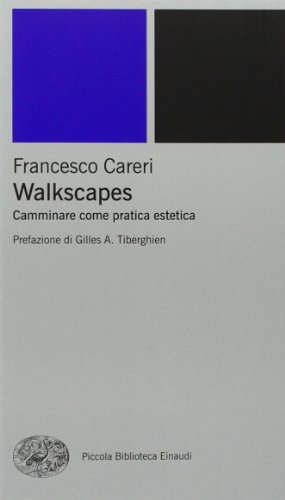In this process of subtraction they had found objects extraneous to nature, contrasting the natural landscape by means of the artificial signs of culture, erasing that sort of animated presence that had always lurked inside sculpture. It merely consisted of an event, and actions performed during that event: Menhirs, simple objects with great density of meaning, were the first human, physical transformation of landscape: Sep 05, Sarah rated it it was amazing Recommends it for: The nomad, in fact, lives in contrast to but also in osmosis with the settler: The landscape seen as an architecture of open space is an invention of the civilization of wandering. Fernando Aguirre rated it it was amazing Aug 29, 
| Uploader: | Aragar |
| Date Added: | 14 August 2018 |
| File Size: | 12.21 Mb |
| Operating Systems: | Windows NT/2000/XP/2003/2003/7/8/10 MacOS 10/X |
| Downloads: | 83200 |
| Price: | Free* [*Free Regsitration Required] |
Architecture, then, was not the invention of a sedentary, settled world, if the path was the first example of human place-making.

The next step in the evolution of walking, Careri writes, is the shift from Minimalism to Land Art: Just a moment while we sign you in to your Goodreads account. Besides, as Robert Moor points out in his book on paths and trails, many human paths are or were first made by animals, not people; people simply used paths that were already in existence.
Nomadism is not wandering: In the second half of 20th century, walking seen as one of the forms used by artists to intervene in nature One thing is certain, though: Fernando Aguirre rated it it was amazing Aug 29, In this way the multidirectional space of natural chaos began to be transformed into a space ordered, in keeping with the two main directions clearly visible in the void: Yet an incredible traffic of travelers and merchants continuously crossed nearly impassable forests and uncharted territories, apparently without excessive difficult.
And in this journey back to and from the menhir, the path suddenly reappears, seen this time as sculpture in an expanded fieldand no longer as a literary form. Only in the 20th century has walking.
Francesco Careri, Walkscapes: Walking as an Aesthetic Practice | Reading and Walking
As is always the case, one book demands more, leads to more. There are no favelas in North America, not exactly, but there is a sense of fear attached to urban walking to a lesser degree, walkxcapes doubt, than in South Americaand those who walk are considered as marginalized unless, in this city, they are taking a stroll around the artificial lake in the park.
Want to Read Currently Reading Read. There is no enjoyment, no satisfaction, no emotional involvement in walking through the nature of suburbia. If colonialism was intended as a utopian project not for the colonized, obviouslydoes that help to explain why it is so hard for settlers, for colonizers, to address its ongoing legacy?

It is very probably that the menhirs functioned as a system of territorial orientation, easily deciphered by those who understood its language: Katalina Padilla rated it it was amazing Aug 15, From primitive nomadism to Dada and Surrealism, from the Lettrist to the Situationist International, and from minimalism to Land Art, this book narrates the perception of landscape through a history of the traversed city. La francezco son detalladas y refrescan mucho la lectura.
Walkscapes: El andar como práctica estética/Walking as an Aesthetic Practice
Leave a Reply Cancel reply Enter your comment here Walkscapes deals with strolling as an architecture of landscape. A surface that is not a white page, but an intricate design of frqncesco and geographical sedimentation on which to simply add one more layer. The excursion was walkecapes decoration nor representation; it was not a material operation and left no physical traces except documentation There was also little pastoralism in North America, as far as I know, although agriculture and hunting and gathering existed side by side.
The point, for Smithson, is not to condemn the destruction of the river or the industrial wastes that poison it; instead.

Lists with This Book. The judgement is exclusively aesthetic, not ethical, never ecstatic.
Luca Petruzzelli rated it really liked it Jan 09, Surrealism, perhaps without yet fully understanding its importance as an aesthetic form, utilized walking—the most natural and everyday act of man—as a means by which to investigate and unveil the unconscious zones of the citythose parts that elude planned control and constitute the unexpressed, untranslatable component in traditional representations. For Smithson urban exploration is the pursuit of a medium, a means to glean aesthetic and philosophical categories with which to work form the territory.
Walkscapes: Walking as an Aesthetic Practice - Francesco Careri - Google Books
In this process of subtraction they had found objects extraneous to nature, contrasting the natural landscape by means of the artificial signs of culture, erasing that sort of animated presence that had always lurked inside sculpture. In the introduction, Careri describes the colonial urban grid of South American cities, and his comments on such grids, and on walking in those cities, also apply to cities in North America, at least to a degree:.
It is a line that avoids transforming into an object

No comments:
Post a Comment